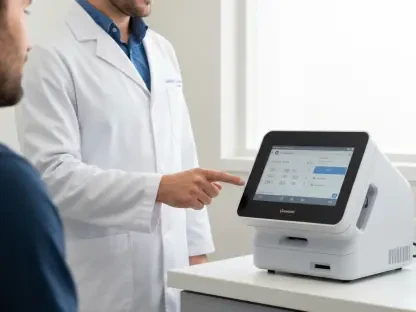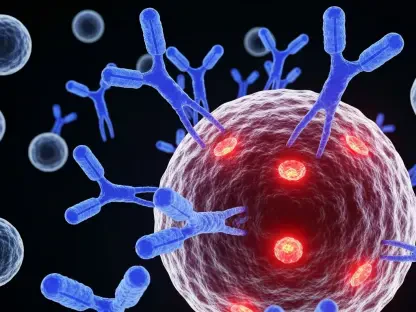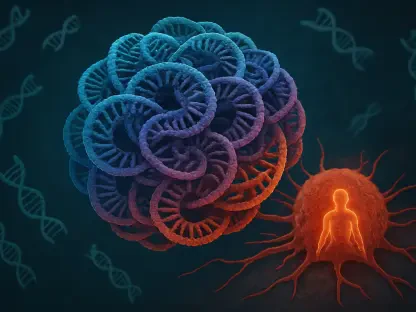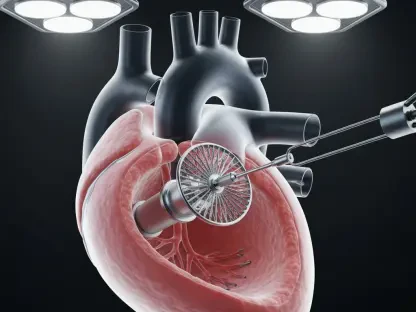The landscape of drug discovery is poised for a significant transformation with the advent of VirtuDockDL, a groundbreaking Python-based platform driven by deep learning and graph neural networks (GNNs). Developed through a collaborative effort by researchers from The University of Lahore, Government College University Faisalabad (GCUF), Shenzhen University, and Taif University, VirtuDockDL aims to enhance the efficiency and accuracy of compound screening and binding prediction. By leveraging advanced technologies, this innovative platform seeks to revolutionize the traditional drug discovery process, addressing some of its most persistent challenges.
Addressing Inefficiencies in Traditional Drug Discovery
Traditional drug discovery methods are notoriously slow, expensive, and often result in a high failure rate. Typically, only one viable drug emerges from screening a million compounds, making the process highly inefficient. High-throughput (HTS) and ultra-high-throughput screening (uHTS) technologies have accelerated the testing of compound libraries, but significant challenges remain, including limited breakthroughs in new drug target identification and persistent data quality issues. These methods, while an improvement over older techniques, still face significant bottlenecks.
To address these inefficiencies, machine learning (ML) and deep learning (DL) offer novel solutions that provide data-driven insights, feature extraction, and predictive capabilities. VirtuDockDL stands out in this regard, utilizing GNNs to predict the effectiveness of compounds with remarkable accuracy. This data-driven approach allows for a more efficient discovery of potential drug candidates, significantly reducing the time and cost associated with traditional methods. Furthermore, the platform’s ability to handle vast datasets and provide accurate predictions represents a major leap forward in pharmaceutical research.
The Architecture of VirtuDockDL
VirtuDockDL’s architecture is meticulously designed to streamline the prediction and screening of biologically active compounds. Initially, molecular data encoded as SMILES strings are transformed into graph representations using RDKit, a toolkit that allows for the conversion of chemical information into a format that GNNs can process. These graph representations are then processed by PyTorch Geometric’s GNN architecture, which helps the GNN understand complex structural relationships within molecules. This transformation is crucial for accurate predictions, as it enables the GNN to capture the intricate details of molecular structures.
The architecture employs several layers of graph convolution to capture molecular features at different hierarchical levels. Additional components like batch normalization, dropout, and residual connections stabilize training and enhance predictive accuracy. Batch normalization ensures that each layer’s input remains stable, while dropout helps prevent overfitting during training. Residual connections, on the other hand, facilitate the smooth flow of information between layers, further improving the model’s performance. By merging graph-based representations with cheminformatics descriptors and fingerprints, VirtuDockDL ensures robust activity prediction, offering a comprehensive understanding of each compound’s potential efficacy.
Comprehensive Functionality and Real-World Applications
VirtuDockDL offers comprehensive functionality, including virtual screening and clustering tools that enable users to evaluate large compound libraries against specific protein targets efficiently. Compounds are clustered based on predicted activity using Gaussian Mixture Models (GMM), a method that allows for the categorization of compounds according to their potential effectiveness. Clustering quality is assessed via Silhouette and Davies-Bouldin scores, providing a quantitative measure of the model’s accuracy and reliability.
The platform also supports protein structure refinement through OpenMM and ligand docking using AutoDock Vina. These tools allow for accurate molecular binding affinity predictions, facilitating the identification of potential drug candidates. The application of VirtuDockDL was demonstrated in Marburg virus research, focusing on the VP35 protein. The GNN model accurately classified compounds, providing actionable insights into potential VP35 inhibitors. This real-world application highlights the platform’s practical utility and its potential to contribute to significant advancements in pharmaceutical research.
User-Friendly Interface and Superior Performance
A notable aspect of VirtuDockDL is its user-friendly interface, built on the Flask framework. The GUI enables users to upload molecules, initiate tasks, and download results, organized into tabs for ease of use. This intuitive design ensures that researchers can quickly and effectively utilize the platform, regardless of their technical expertise. During testing, the GNN model trained on active/inactive VP35 protein molecules achieved high accuracy (97.79%) and strong metrics (AUC 0.9972), demonstrating the platform’s robust performance.
Subsequent screening of non-covalent inhibitors from the ZINC and PubChem databases identified 146 potential candidates, further validating VirtuDockDL’s efficacy. Additional tests on HER2, beta-lactamase, and CYP51 datasets confirmed VirtuDockDL’s superior performance in binding affinity predictions, consistently outperforming other tools like PyRMD, RosettaVS, MzDOCK, AutoDock Vina, and Glide. This consistent performance across multiple targets underscores the platform’s versatility and reliability.
Revolutionizing Pharmaceutical Research
The landscape of drug discovery is on the brink of a significant transformation with the introduction of VirtuDockDL, a groundbreaking platform powered by deep learning and graph neural networks (GNNs). This innovative Python-based tool is the result of a joint effort by researchers from The University of Lahore, Government College University Faisalabad (GCUF), Shenzhen University, and Taif University. VirtuDockDL’s main goal is to enhance the efficiency and precision of compound screening and binding prediction, processes that are crucial in drug discovery. By integrating advanced technologies, this platform aims to overhaul the traditional methods of drug discovery, tackling some of the field’s most enduring challenges. VirtuDockDL has the potential to streamline the drug development process, making it faster and more accurate, ultimately accelerating the discovery of new, effective treatments. This collaboration highlights the importance of global partnerships in advancing scientific research and innovation, setting new standards for the future of drug discovery.









